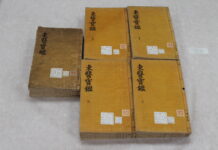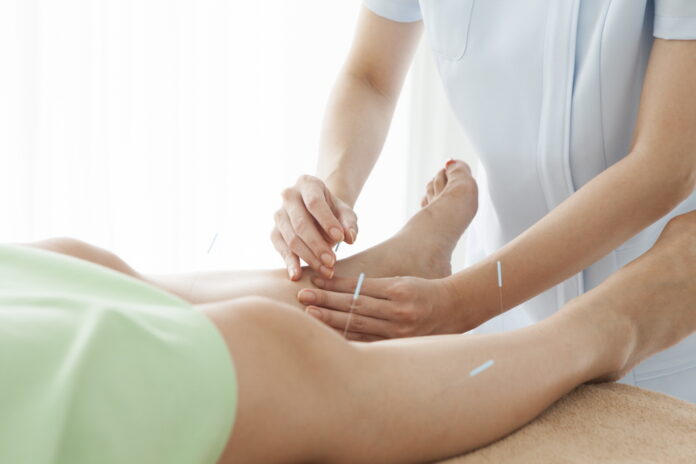By By Manyong Park, Sungchul Kim, KMD, Wonkwang University Korean Medical Hospital, Department of Acupuncture & Moxibustion, Gwangju, Republic of Korea, ALS Center of Wonkwang University Korean Medical Hospital, Gwangju, Republic of Korea
To review clinical articles on Saam acupuncture, we used the following six databases: “Korean Studies Information Service system (KISS)”, “National Discovery for Science Leaders (NDSL),” “Research Information Sharing Service (RISS),” “Oriental Medicine Advanced Searching Integrated System (OASIS),” PUBMED, and Google Scholar. The key words were “Saam” and “Saam acupuncture.” The retrieved papers were screened so that only articles related to clinical research were retained. We selected 28 case studies and 17 clinical studies.
Saam Acupuncture Case Studies. Saam acupuncture has been applied for several diseases, and these are summa- rized in Table 3. However, the number of cases is low, and various therapeutic modalities were combined with Saam acupuncture except for some Therefore, recognizing
the effect that can be attributed to Saam acupuncture is difficult. Notably, treatments other than Saam acupuncture were well controlled in five cases.
In the case of a sleep disorder caused by a traffic accident, tonification of gall bladder improved sleep quality [15]. In traditional Chinese medicine (TCM), the gall bladder serves to buffer psychological anxiety. Because the cause of insomnia was determined to be a gallbladder deficiency, gallbladder tonification was selected as the solution.
Modified Saam acupuncture was used to treat 17 patients with refractory, sudden sensory-neuronal hearing loss of more than 3 weeks after a failed trial of conventional treatment including corticosteroids. The total improvement rate at 70.4 days after the initial visit was 47.1%. Thus, Saam acupuncture might be effective for refractory sensory- neuronal hearing loss in which conventional therapy has failed [16].
A 30-year-old woman with a right adnexal mass was treated with Saam acupuncture for 14 weeks. After treat- ment, transvaginal sonography revealed disappearance of the right adnexal mass. This effect may have been evoked by modification of autonomic nerve activity as a result, for example, of reflex alteration of ovarian sympathetic nerve activity [17].
Table 3: Saam acupuncture clinical case reports.
|
Year |
Disease |
? |
Period |
|
1964 |
Eyelid edema |
1 |
7 days |
|
1975 |
Indigestion, HNP of lumbar |
3 |
2–5 days |
|
1981 |
Neurosis, duodenal ulcer |
2 |
14 days |
|
1998 |
Hyperemesis gravidarum |
1 |
15 days |
|
2002 |
Hwa-byung |
2 |
5 months |
|
2002 |
Wei symptom |
1 |
2 months |
|
2002 |
Oral dyskinesia |
1 |
1 month |
|
2003 |
Hemichorea-hemiballism |
1 |
8 days |
|
2003 |
Sequelae of CVA |
1 |
10 months |
|
2003 |
Hemorrhoid |
2 |
10 days |
|
2003 |
Fracture |
1 |
1 month |
|
2004 |
Lumbar compression fracture |
1 |
14 days |
|
2004 |
Insomnia |
20 |
3 days |
|
2006 |
Otitis media |
3 |
1 month |
|
2007 |
Tic disorder |
1 |
3 months |
|
2008 |
Knee strain |
1 |
1 week |
|
2008 |
Inflammatory acne |
1 |
2 months |
|
2009 |
Cancer pain |
1 |
2 months |
|
2010 |
Hearing loss |
17 |
10 weeks |
|
2011 |
Foot coldness |
1 |
1 week |
|
2012 |
ALS |
1 |
5 days |
|
2012 |
Meniere’s disease |
1 |
3 weeks |
|
2013 |
Adnexal mass |
1 |
14 weeks |
|
2013 |
Calcific tendinitis of shoulder |
1 |
7 days |
|
2013 |
ALS |
18 |
5 days |
|
2014 |
Cancer |
10 |
14 days |
|
2014 |
Chronic post-stroke hemiparesis |
7 |
1 month |
?: number, ALS: amyotrophic lateral sclerosis, CVA: cerebrovascular accident, and HNP: herniated nucleus pulposus.
Modified Saam acupuncture (LU8, BL66, SI5, TE4, and CV12) was used to treat 10 cancer patients for 2 weeks with 4 sessions. CD3+, CD8+, and T-cell subsets were significantly increased and the fatigue severity scale score was significantly decreased. Therefore, Saam acupuncture may improve the immune system [18].
Finally, peripheral capillary oxygen saturation (SpO2) was significantly increased in 18 amyotrophic lateral sclerosis patients with respiratory dysfunction who were treated with lung tonification [19].
Saam Acupuncture Clinical Clinical studies of Saam acupuncture were mainly performed in relation to mus- culoskeletal pain and autonomic nervous system regulation (Table 4). Meridian identification was predominantly used when Saam acupuncture was applied to musculoskeletal pain. For example, when leg pain and numbness were present due to a herniated disc, bladder tonification was selected if the symptom occurred towards the back of the leg, and gall blad- der tonification was used if the symptom occurred towards the lateral side of the leg, according to the flowing area of the meridian [20–22]. This principle was applied equally to knee pain derived from osteoarthritis [23], posterior ear pain due to Bell’s palsy [24], and chronic tension headache [25]. Musculoskeletal pain-related clinical researches of Saam acupuncture mentioned above showed good results.
In clinical trials related to autonomic nervous system dysfunction, visceral pattern identification was used as the diagnostic criteria. For example, in case of Hwa-byung (Korean somatization disorder) [26–28], the heart or peri- cardium meridian, which is associated with psychological states in TCM, was selected. A tonification of pericardium was effective on the treatment of Hwa-byung. When the balance of the autonomic nervous system was disrupted by night-shift working [29], the gallbladder meridian that fits the psychological proportion was selected. A tonification of gall- bladder could attenuate the imbalance between sympathetic and parasympathetic activities. When the face temperature dropped because of smoking [30], the fire acupoints of a fire organ (heart) and water organ (kidney) (HT8 and KI2, resp.) were selected as the treatment points. 5 of the 7 subjects showed increased temperatures after fire tonifica- tion treatment. In order to decrease hypertension in stroke patients [31], the bladder meridian, which has water and cold attributes, was applied. After 30 minutes of treatment, a tonification of the bladder meridian significantly depressed the systolic and diastolic blood pressure.
Although the method of setting the test and control groups differed slightly for each study, the use of a sham needle device for the control group appears to be the most desirable condition for scientific research. The Park sham needle was used to blind the participants [32], and the Kim sham needle was used to blind both the practitioner and participants [30].
Comparing the simultaneous application of Saam acupuncture and general body acupuncture and a single application of general body acupuncture is not suitable [20–22] because the amount of stimulation is different. Treating the control group by needling a nonacupoint is also problematic because the selection of nonacupoint near the five shu points could result in similar neurobiological activity. Notably, no significant difference was observed between the test and control groups in the Hwa-byung studies [26, 27]. In fatigue studies, the test group as well as the control group exhibited statistically significant effects in the multidimensional fatigue scale [33].
References
- (15) H. Shin, S. H. Lee, K. B. Park, and J. H. Cho, “Clinical study Sa-am acupuncture of insomnia in traffic accident,” The Journal of the Korea Institute of Oriental Medical Informatics, vol. 10, no. 2, pp. 51–60, 2004.
- (16) S. Yin, H.-J. Park, and H. J. Nam, “Acupuncture for refractory cases of sudden sensorineural hearing loss,” Journal of Alterna- tive and Complementary Medicine, vol. 16, no. 9, pp. 973–978, 2010.
- (17) C. Seo, O.-C. Kwon, H.-J. Kwon, D.-K. Chung, Y.-J. Cho, and G. H. Lee, “Disappearance of an adnexal mass with Saam acupuncture: a case report,” Acupuncture in Medicine, vol. 32, no. 1, pp. 81–83, 2014.
- (18) J. Kim, S. H. Park, J. C. Seo et al., “Efficacy of saam acupunc- ture treatment on improvement of immune cell numbers in cancer patients: a pilot study,” Journal of Traditional Chinese Medicine, vol. 34, no. 5, pp. 550–554, 2014.
- (19) M. Lee and S. C. Kim, “The effects of Sa-am acupuncture treatment on respiratory physiology parameters in amyotrophic lateral sclerosis patients: a pilot study,” Evidence-Based Comple- mentary and Alternative Medicine, vol. 2013, Article ID 506317, 7 pages, 2013.
- (20) Lee and W. J. Hwang, “The clinical study on the efficiency of the sa-am acupuncture treatment,” The Journal of the Korean Acupuncture and Moxibustion Society, vol. 16, no. 1, 1999.
- (21) H. Kim, E. J. Park, C. H. Park, M. R. Cho, C. R. Ryu, and W. S. Chae, “Comparison of the improvement back pain and sciatica between common acupuncture group, common acupuncture with shin jong gyuk of haeng acupuncture treatment group,” The Journal of the Korean Acupuncture and Moxibustion Society, vol. 19, no. 1, pp. 84–91, 2002.
- (22) S. Chang, K. S. Jin, J. W. Kim et al., “Clinical study on the remedial effect of oriental medicine used EAV (meridian),” The Journal of the Korean Acupuncture and Moxibustion Society, vol. 19, no. 6, pp. 80–96, 2002.
- (23) H. Min, The Effect of Saam Acupuncture in Patients with Osteoarthritis of the Knee, Kyunghee University Graduate School, 2006.
- (24) W. Choi, J. H. Kang, Y. I. Kim, K. E. Hong, and H. Lee, “Clinical comparison studies on 30 cases of bell’s palsy patients with posterior ear pain by saam acupuncture sojangjeonggyeok & general acupuncture,” The Journal of the Korean Acupuncture and Moxibustion Society, vol. 21, no. 4, pp. 125–134, 2004.
- (25) E. Hong, Y. C. Park, J. H. Jo et al., “Effect of sa-am acupunc- ture method for chronic tension-type headache: a randomized controlled trial,” The Journal of the Korean Acupuncture and Moxibustion Society, vol. 24, no. 1, pp. 13–28, 2007.
- (26) C. Jung, S. R. Lee, Y. C. Park et al., “The effect of saam acupuncture treatment for major symptom of hwa-byung: a preliminary study,” Journal of Oriental Neuropsychiatry, vol. 18, no. 1, pp. 79–94, 2007.
- (27) C. Jung, S. R. Lee, Y. C. Park et al., “The effect of saam acupuncture simjeongkyeok treatment for major sympom of hwa-byung,” Journal of Oriental Neuropsychiatry, vol. 19, no. 1, pp. 1–18, 2008.
- (28) Choi, S. Lee, I. Son, and S. Sun, “The effects of Sa-am acupuncture Simpojeongkyeok treatment on Hwa-byung : ran- domized, patient-assessor blind, placebo-controlled acupunc- ture, pilot clinical trial,” Journal of Oriental Neuropsychiatry, vol. 22, no. 2, pp. 1–13, 2011.
- (29) S. Hwang, H. K. Kim, J. C. Seo, I. H. Shin, D. H. Kim, and Y.-S. Kim, “Sympathomodulatory effects of Saam acupuncture on heart rate variability in night-shift-working nurses,” Comple- mentary Therapies in Medicine, vol. 19, supplement 1, pp. S33– S40, 2011.
- (30) Lee, N. Lim, S. M. Choi, and S. Kim, “Validation study of Kim’s Sham needle by measuring facial temperature: an N-of- 1 randomized double-blind placebo-controlled clinical trial,” Evidence-Based Complementary and Alternative Medicine, vol. 2012, Article ID 507937, 7 pages, 2012.
- (31) S. Park, E. M. Kim, Y. I. Kim, K. E. Hong, and H. Lee, “The depressive effect of sa-am acupuncture treatment in stroke patients,” The Journal of the Korean Acupuncture and Moxibustion Society, vol. 21, no. 4, pp. 217–223, 2004.
- (32) Park, A. White, C. Stevinson, E. Ernst, and M. James, “Validating a new non-penetrating sham acupuncture device: two randomised controlled trials,” Acupuncture in Medicine, vol. 20, no. 4, pp. 168–174, 2002.
- (33) H. Kim, H. J. Park, H. A. Park, J. H. Jang, K. S. Hwang, and Y. Lee, “The clinical study on the effect of sa-am acupuncture treatment for patients with fatigue,” The Journal of the Korean Acupuncture and Moxibustion Society, vol. 24, no. 6, pp. 149–157, 2007.



































